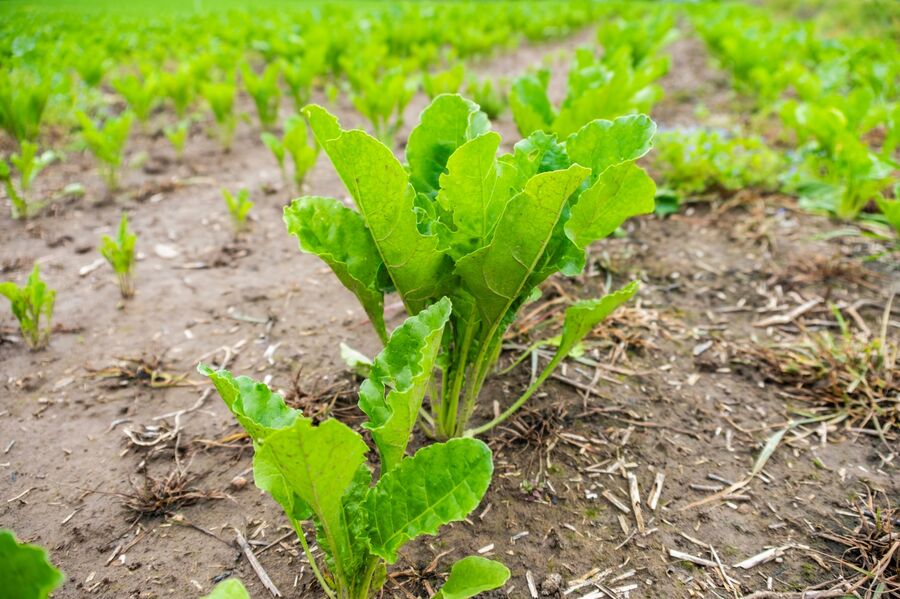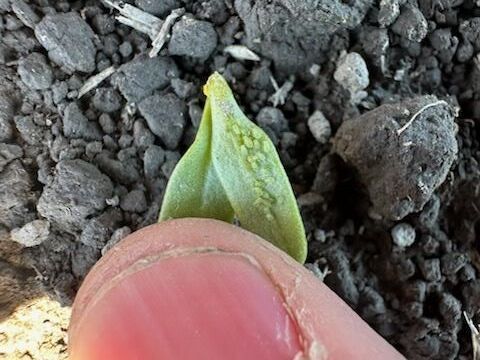
Weed ID and Pest Management at Early Emergence
When you’re flat out with drilling, tailing, mating and silage runs, it’s easy to treat weeds and pests like background noise.
But right now - as soil temps rise and growth increases – weeds and pests are quietly stealing yield from under your boots.
November’s warmth is a gift and a curse.
Crops are finally stretching out of their early growth stages - but so are the things that want to eat them. The combination of mild nights, rising humidity, and soft new leaf tissue creates the perfect window for weeds, insects, and disease to move in.
Weed ID: Know What You’re Fighting
Across much of the South Island, we’re seeing early flushes of:
- Fathen, wireweed, willow weed, and spurrey (just to name a few) in new fodder beet crops.
- There are only a handful of chemical actives registered for use over fodder beet with each active having its own strengths and weaknesses against certain weeds.
- Understanding which weeds are present and which actives are most effective on these weeds is a key part to getting your crop off to a cracking start.
They all look innocent enough at the cotyledon stage - until you hit them with the wrong active. That’s where a lot of underperformance starts.
Timing and technique matter just as much:
- Growth stage: Younger weeds are easier to control - delay a week and you’re doubling the dose or halving the kill.
- Coverage: Higher water rates give better coverage – coverage is king.
- Weather: Hot weather generally reduces the efficacy of many chemicals by accelerating degradation increasing volatility or causing target weeds to shut down metabolic processes and can also cause unwanted crop scorching.
- Balance: The correct rate and timing are critical to achieving full weed suppression while avoiding phytotoxic stress. Over-application increases the risk of crop damage and wasted chemistry, while under-application compromises control.
Before you tip chemical into the tank, walk the paddock. Get your eye in, take a photo, or bring a sample. Your Catalyst agronomist can ID species, assess growth stage, and help pick the most cost-effective plan - one that hits hard now and sets the next crop up clean.
Weed ID isn’t about being clever; it’s about being efficient.
Less waste, less rework, and a cleaner start for the season ahead.
Insect and Disease Pressure: Stop Problems Before They Start
Aphids - the silent spreaders
Aphids are a significant pest for beet crops in New Zealand. Primarily because they transmit viruses like Beet Western Yellows Virus (BWYV) which can cause yellowing of the leaves and total canopy collapse later in the season.

Catalyst tip:
- Sow insecticide treated seed.
- Monitor undersides of leaves and crop edges twice a week.
- Apply insecticide preventatively if populations reach threshold.
- Don’t rely on old chemistry - rotate modes of action to avoid resistance.
- There are several options available to control aphids – talk to your local agronomist for the option that will best suit your system.
Greasy Cutworm - sneaky and destructive
This moth can be a major issue in fodder beet, especially where crops follow long fallows. After hatching young caterpillars forage on leaves until they are about 1/3 grown. Larger caterpillars lie curled up 25mm-50mm below the soil surface during the day and emerge at night to feed. Given the low plants per m2
they can be devastating to a young fodder beet crop.

Catalyst tip:
- Scout early. If a paddock’s been left bare, have a dig before you plant or soon after emergence.
- Lambda-cyhalothrin remains effective, but there are IPM-friendly options worth discussing with your agronomist.
Nysius - small pest, big problem
Also known as the wheat bug, Nysius huttoni can cause significant establishment losses in young fodder beet crops - particularly in hot, dry conditions. Adults and nymphs feed by making punctures around the base of the plants – this can directly lead to plant death, even larger seedlings (6 – 8 leaf) can be affected.
Catalyst tip:
- Keep a close eye on newly emerged crops, especially during warm, dry spells. Early detection is key.
- Once feeding damage is visible, control options are limited - preventative monitoring and timely treatment are the best defence.
- Talk to your local agronomist about suitable chemistry and thresholds for intervention in your region.
The Takeaway
Spraying smart isn’t about loading more chemical - it’s about knowing when and why to act.
Regular paddock walks, early identification, and timely applications separate clean crops from compromised ones.
Catalyst agronomists are out there now checking crops across Canterbury, Central Otago, and Southland.
We’ll help you stay ahead of the curve - matching chemistry to pressure and protecting yield before it’s under threat.
Because once disease or insects take hold, you’re not managing - you’re chasing.
That’s not Performance Agronomy™.
Performance Agronomy is being one step ahead.